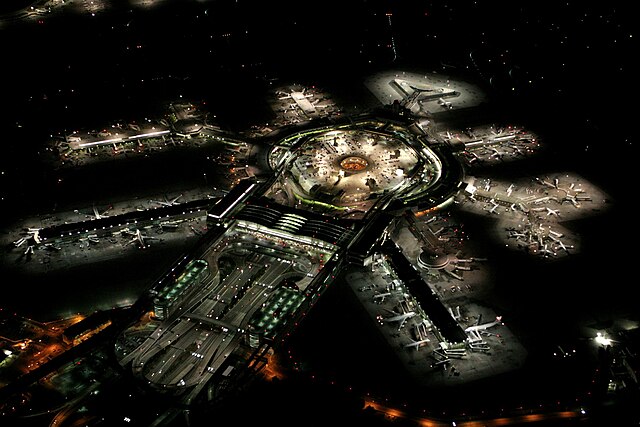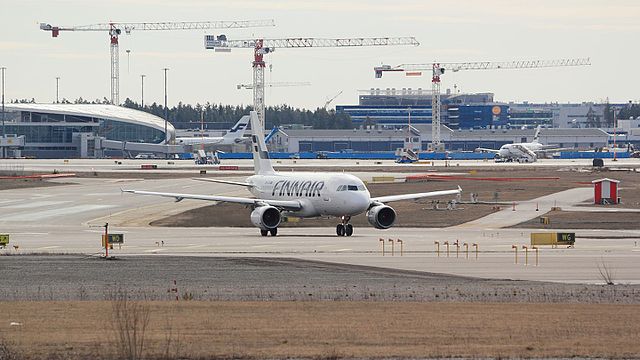Croydon Airport was the UK's only international airport during the interwar period. It opened in 1920, located near Croydon, then part of Surrey. Built in a Neoclassical style, it was developed as Britain's main airport, handling more cargo, mail, and passengers than any other UK airport at the time. Innovations at the site included the world's first air traffic control and the first airport terminal. During World War II the airport was named RAF Croydon as its role changed to that of a fighter airfield during the Battle of Britain; and in 1943 RAF Transport Command was founded at the site, which used the airport to transport thousands of troops into and out of Europe.
Croydon Airport
Area around Croydon Airport as it was in the 1920s or 1930s
Aerial view of Croydon Airport in 1925
Unsuccessful forced deportation of Jewish refugees at Croydon Airport, 30 March 1939
An international airport is an airport with customs and border control facilities enabling passengers to travel between countries around the world. International airports are usually larger than domestic airports, and feature longer runways and have facilities to accommodate heavier aircraft such as the Boeing 747 and the Airbus A380 commonly used for international and intercontinental travel. International airports often host domestic flights, which helps feed both passengers and cargo into international ones.
San Francisco International Airport at night, with departure gates radiating out from the terminal building, aerobridges, apron and parked planes
Qantas Empire Airways International Short Empire flying boat services arriving at Rose Bay, Sydney (c. 1939)
Finnair Airbus A319 at the Helsinki Airport in Vantaa, Finland. Terminal expansion construction site in the background.
A flight information display system screen at Charles de Gaulle Airport's Terminal 2 showing flight arrivals








